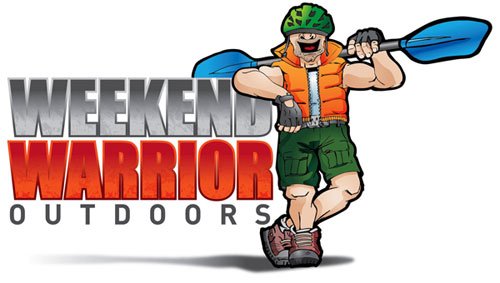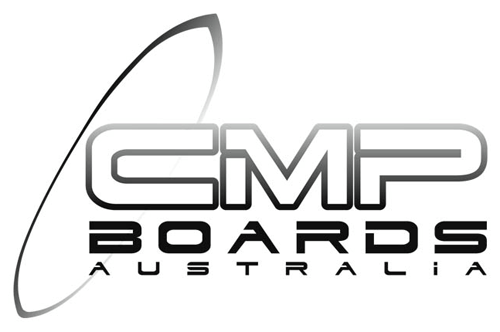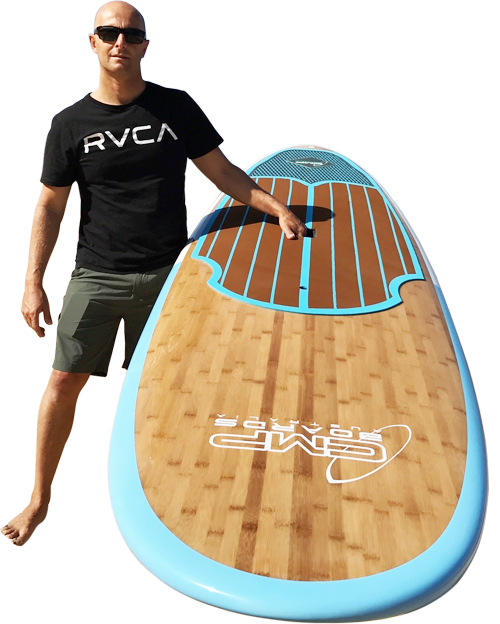
Choosing A Kayak
We are the Australian manufacturer and distributor for Weekend Warrior Kayaks. It is important to obtain some background knowledge of the differences between kayak models. So this guide will help you choose a kayak.
You may be interested to know that our background is Owning and running a successful Australian Plastic Moulding Company. So you will not find a better person to talk to than us about how these are made. We WILL NOT compromise the quality of a Weekend Warrior Kayak and our BRAND NAME is SO important.
WE ARE A KAYAK SPECIALIST AND YOU ARE TALKING STRAIGHT WITH THE WEEKEND WARRIOR KAYAK MANUFACTURER.
So lets help you find the best Kayak for you.
LET’S START WITH THE DIFFERENCE BETWEEN A SIT IN KAYAK AND A SIT ON KAYAK DESIGN
What is a Sit on Top Kayak?

Sit on Top (SOT) kayaks are when the seats are above water level and allows the paddler to sit on top of the kayak deck with your legs exposed, where everything is rigged out on top of the kayak. These are typically a wider, shorter body and slower than traditional kayaks to paddle but are extremely stable.
It is harder to stay dry on a SOT kayak but with Australia’s warm climate these are a very popular style.
| Pros | Cons |
|---|---|
| Exceptional stability making it easy to get in and out of | Slower to paddle then a sit in style |
| You can re-enter your SOT from the water, so you can slide into the water for a quick swim and climb back onto the kayak. Perfect for the kids to jump in and out of the water | You are more likely to get wet on this style of kayak |
| It is very hard to capsize this style, but If you do you can flip this back over with ease without it filling up with water | You will need to use dry bags to keep anything on the deck dry, other than the storage hatches included |
| These also have self draining holes which allow water that splashes onto the deck to drain back out by removing the drain plugs. Super easy and quick. | If you are looking at paddling long distance then forget about this style |
| Lots of freedom of movement and plenty of storage on the deck |
What is a Sit in Kayak?

Sit in Kayaks have an open hollow cockpit where your legs are under the deck as the paddler climbs in and sits inside the hull of the kayak. The primary advantage of sit in kayaks include a much drier ride for you with the ability to use a spray skirt on most models and more dry storage space. Many people are concerned about flipping a Sit in Kayak, but these are really not that easy to flip. Whether sit in or sit on, the flipping factor has more to do with the kayak shape and hull design.
| Pros | Cons |
|---|---|
| Fast and Easy Paddling | If flipped, this will take on water and you will need to take it to shore to empty or bail it out |
| You can re-enter your SOT from the water, so you can slide into the water for a quick swim and climb back onto the kayak. Perfect for the kids to jump in and out of the water | Can be more challenging to get in and out of |
| Plenty of dry storage areas | Your movement can be more restricted since you are sitting in the cockpit |
| Bilge pumps can be a great purchase if buying a Sit in Kayak to scoop out water if you flip |
Whether you decide on a sit in kayak or sit on kayak we believe the most important consideration is what kayak you will be comfortable in!
NOW WE WILL WALK YOU THROUGH THE DIFFERENT TYPES OF KAYAKS
1. Recreational Kayak
Recreational kayaks are perfect for calm waters and for the casual paddler. These are available in single or double, sit-on-top and sit-in styles. Perfect for anglers, photographers or novices for the lake or river, these are usually less than 3.8 metres in length. These are not so good in windy conditions or currants so choose your conditions if taking them in the ocean or open water. The width of this style usually is 70-90cm which make this a stable choice and perfect for those shorter day trips.
Pros: Very stable, easy to use, very affordable, short so maneuverable, perfect for a short day trip
Cons: They are not as fast as a touring kayak and don’t track as well (keep a straight course) so don’t perform as well as touring kayaks in the ocean, limited dry storage
2. Sea or Touring Kayaks
A sea kayak is built for longer distance paddling where you are paddling for extended periods of time, whether a few hours or overnight. This style has a sleek long length which allows for a smoother paddle and you will get from A to B in record time. The shape of the bow allows the kayak to slice through the chop in the ocean and handle the swell with ease. They also have a rocker which makes it easier to turn in rough conditions.
These can be used on flat water, in lakes or rivers as well as ocean conditions for any touring expedition. Usually a sea kayak is over 4.4 metres, have bulkheads for plenty of storage and come with a rudder so you can control the direction of your kayak in strong currants and windy conditions.
Sea Kayaks are available in single and doubles.
Pros: Perform much faster than a recreational kayak, sealed hatches and bulkhead enhance safety, ability to store gear in the front and rear rubber sealed hatches
Cons: Smaller cockpits that can feel limited for space, more expensive than a recreational kayak
3. Fishing Kayak
Fishing Kayaks are becoming increasingly popular in Australia and many Australians are ditching the boat to make way for a kayak which is purpose built for the angler. The weekend warrior range includes the entry level all rounder kayak which is if you want to occasionally throw a line in, to the kayak with a full rudder steering system with ample storage for the catch.
The fishing kayaks are designed with built in rod holders, hatches, bucket wells, anchor points and so much more to keep you on the water for hours.
The most important element of a fishing kayak is stability and comfort. You need to be able to stand in a kayak and cast the rod, as well as ample space for all the fishing gear. It is important if you are ocean fishing that you get a kayak with a rudder as you will be able to steer
Pros: Built for Fishing, Length usually up to 3.7 metres so they are short enough to turn in rivers and lakes to get into those tight fishing spots, stable enough to stand in and cast
Cons: The fishing gear can be in the way if you are only occasionally fishing in it.
What is the benefit of say a recreational kayak to a sea kayak?
This is a quick reference guide to our Weekend Warrior Range:
| Recreational | Fishing | Sea/Touring | |
| Best for: | Lakes, Rivers, Calm waters | Rudder style-Ocean Non Rudder – Lake, Rivers | Ocean, Lakes, Currants, Rivers |
| Duration | Few Hours | Day | Overnight |
| Skill Level | Beginner | Beginner – Intermiadiate | Beginner – Advanced |
| Stability | Better | Better | Good |
| Manaevarability | Better | Better | Good |
| Speed | Good | Good | Better |
| Tracking | Good | Good | Better |
| Manageable | Better | Good | Good |
What are the benefits of a short kayak to a long kayak?
We thought is may be easier to do a quick guide to detail some differences, we hope this helps!
| Short Length Kayaks | Longer Kayaks |
|---|---|
| Easier and quicker to turn | Much faster and easier to paddle over a longer distance |
| Great for lakes, rivers and any smaller distance paddling | Great for the Ocean, and long distance tours |
| Great Family Option- easy for kids to paddle in | Lots of dry storage room |
| Easier to carry to the water | Tracks better in the water |
| Easier to store in smaller spaces | Glides through the water due to the shape |
What are the benefits of a wide kayak to a narrow kayak?
There is some significant differences as outlined:
| Wide | Narrow |
|---|---|
| Very stable to get into and out off | More secondary stability, so once you are paddling they are very stable and less chance of capsizing |
| The width usually affects the speed so they are slower | Faster as they are sleek |
| Heavier to handle | Track better in the water due to the shape |
| These are harder to paddle as you are pushing more water | Paddles easier as you are gliding through the water |
What material are Weekend Warrior kayaks made of?
All our kayaks are made of a UV stabilized LLDPE polyethylene plastic which is rotomoulded to produce the end product. Rotomoulding is when plastic pellets are heated in the kayak mould and the machine rotates the mould to give an even thickness to the kayak.
The reason we select this plastic material is that it is very affordable material, very robust and strong so can handle many conditions and it has 6 years of UV stabilisers. This means that it can handle 6 years of direct sunlight before it starts to break down. The first thing it will do is fade and followed years later becoming brittle.
We strongly suggest if you have no space in your garage then store them outside with a tarp covering the kayak. Then it will last for a very long time. 6 years of direct sunlight is a long time if you are only getting it out once a week in the sun.
Are these kayaks good for beginners?
Yes absolutely. Our range of kayaks is designed with the beginner to intermediatte paddler in mind.
Do I need proper roof racks for transporting my kayak?
No. We have soft roof racks designed to suit our kayaks. These are wider then a normal size soft racks and come complete with 5 metre tie down straps.
How can I carry my kayak?
By using the carry handles on the kayak at either end or the middle of the boat depending on each model, some kayaks are easier to lift then others as they range in size and weight.
A kayak trolley is a great way of saving your back and we have various styles to suit all our kayak range.
What happens if I hole my kayak?
Polyehthylene plastic kayaks are very durable and are tough boats. This construction is much tougher then fibreglass. If you were accidentely hole your kayak for instance dragging it over a bed of oyster rocks,then this material can be plastic welded. In most instances these can be fixed which makes them a great durable product.
How much weight can a kayak hold?
The load capacity depends on each individual kayak and each product listing has the weight capacity clearly outlined.
There are so many choices in Kayaks and canoes we have put together some questions you could ask yourself to help point you in the right direction when choosing a kayak:
- Will you be paddling with another person (tandem double) or do you want to be solo or possibly you want to use both options?
- Where will you be kayaking- the ocean, river, lake, whitewater, surf etc?
- Will you be touring overnight?
- What is your height and weight? Some kayaks are better for different sizes.
- What are your storage options? Can you fit a longer kayak in your garage?
- Are you planning on a long expedition, possibly overnight, a short paddle or all day use?
- Do you prefer a sit on top style of kayak or an enclosed canoe where you are higher in the water
- Will you be needing a spray skirt for ocean paddling? or is it just the calm lake you want to tackle
These are just questions to help you decide which kayak is the right option. If you are still unsure of what you are looking for please contact us anytime and we can point you in the right direction!







